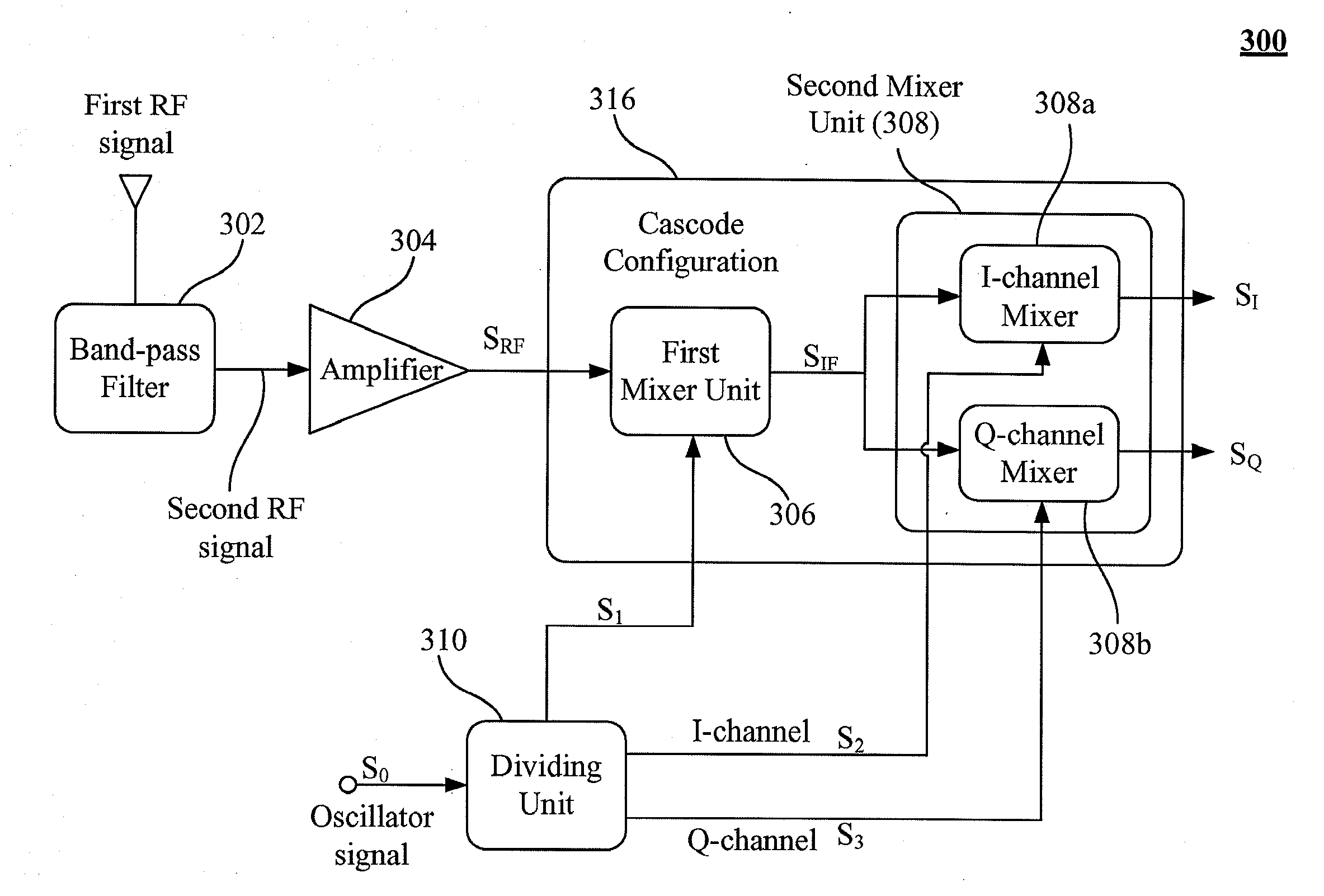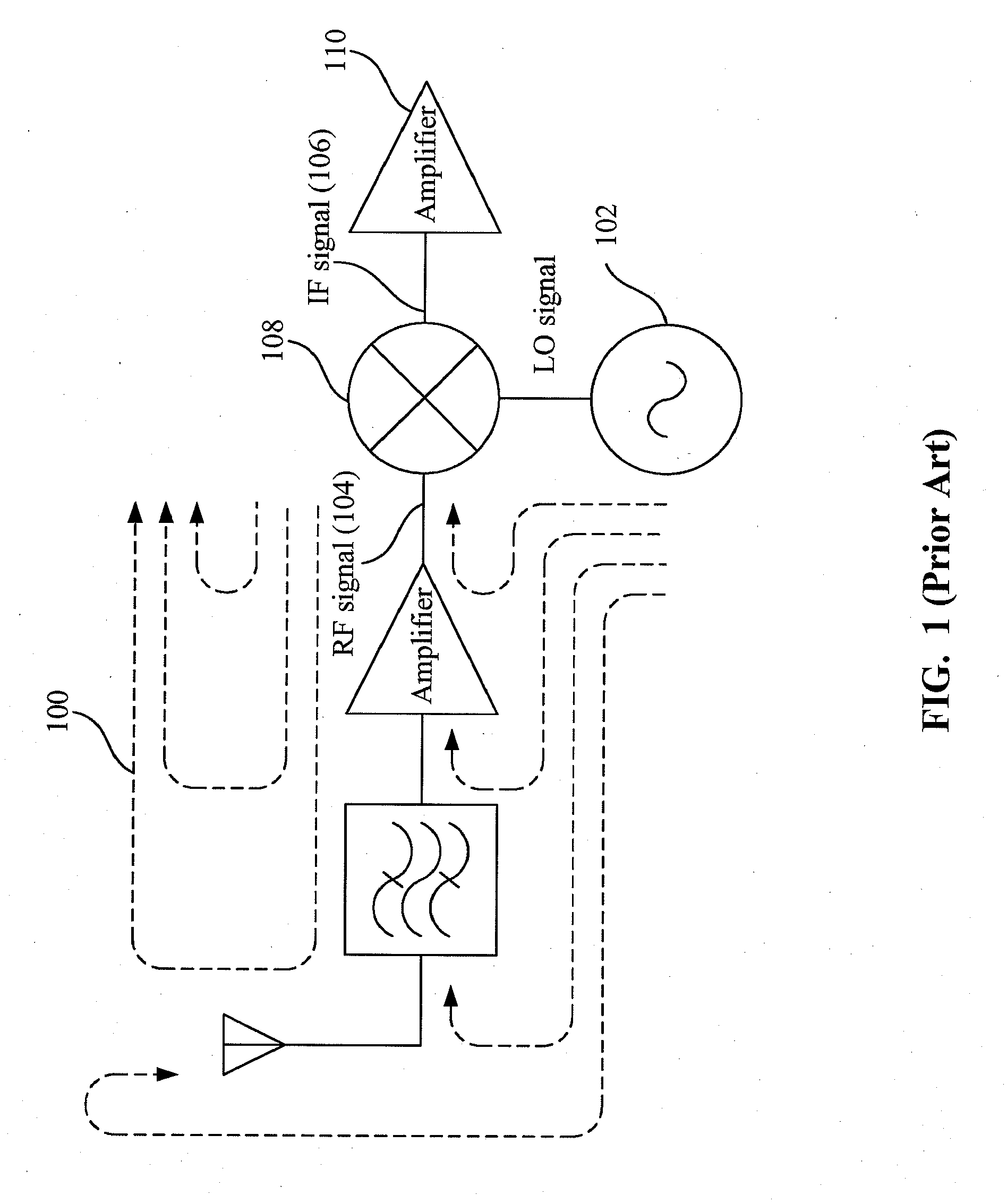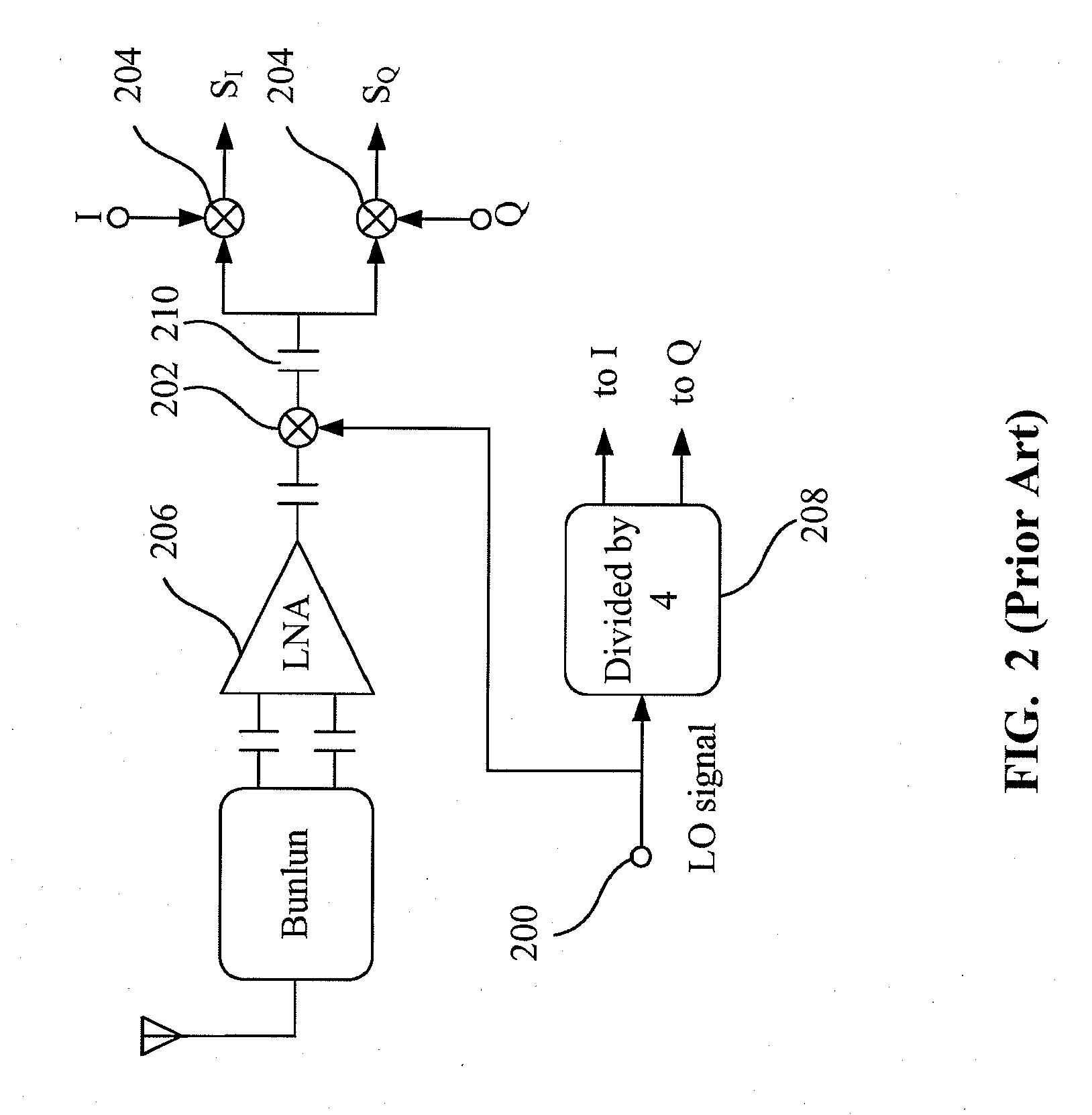Mixer with dynamic intermediate frequency for radio-frequency front-end and method using the same
a radio-frequency front-end and dynamic intermediate frequency technology, applied in the field of communication system and method, can solve the problems of large area occupation of the rf front-end circuitry, self-mixing phenomenon, and limiting the sensitivity of the receiver, so as to reduce the size of the circuitry, improve the efficiency of the radio-frequency front-end, and eliminate phase noise of the amplified received signal
- Summary
- Abstract
- Description
- Claims
- Application Information
AI Technical Summary
Benefits of technology
Problems solved by technology
Method used
Image
Examples
Embodiment Construction
[0024]The present invention is directed to the simplified mixer architecture with dynamic intermediate frequency used in a radio-frequency (RF) front-end to actively adjust the intermediate frequency by the first and the second mixer units in a cascode configuration. A dividing unit can be further employed to receive an oscillator signal to provide a first, a second, and a third frequency signals to the first and the second mixer units. Moreover, the radio-frequency front-end with simplified mixer architecture can reduce the size of the circuitry. The mixer architecture of the present invention is applicable to any kind of transceivers including receivers and transmitters, preferably for direct conversion receivers.
[0025]Referring to FIG. 3, a schematic block diagram of a radio-frequency front-end with mixers according to one embodiment of the present invention is shown. The radio-frequency front-end 300 comprises a band-pass filter 302, an amplifier 304, a first mixer unit 306 and ...
PUM
 Login to View More
Login to View More Abstract
Description
Claims
Application Information
 Login to View More
Login to View More - R&D
- Intellectual Property
- Life Sciences
- Materials
- Tech Scout
- Unparalleled Data Quality
- Higher Quality Content
- 60% Fewer Hallucinations
Browse by: Latest US Patents, China's latest patents, Technical Efficacy Thesaurus, Application Domain, Technology Topic, Popular Technical Reports.
© 2025 PatSnap. All rights reserved.Legal|Privacy policy|Modern Slavery Act Transparency Statement|Sitemap|About US| Contact US: help@patsnap.com



